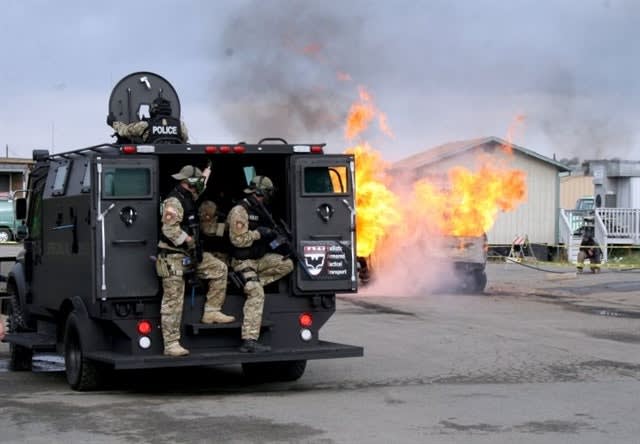The same is also true for a number of other SWAT team participants involved in the dangerous, extensive manhunt for a multiple murder suspect in Cupertino, Calif. Both
suspects in Mendocino and Cupertino met a violent end
. However, they didn't "take anyone with them" due to the brave professionalism by all involved officers.
Shortly after the completion of Urban Shield 2011, the real world once again interjected itself onto Northern California officers in the form of the Occupy movement. This has been seen most notably in Oakland, which experienced violent clashes between protesters and police.
The Oakland Police Department, which is severely understaffed, wisely requested mutual aid from several Northern California law enforcement agencies. The early morning evictions and dismantling of the increasingly dangerous, unsanitary "tent city" in front of Oakland City Hall was relatively incident free, despite numerous arrests.
After the evictions, protesters returned en masse to
battle police by throwing rocks, bottles, and paint
. Police responded with chemical and less-lethal munitions. Ultimately, the Oakland mayor allowed the protesters to return to their tent city, which was reminiscent of the Vietnam War where military tactics often played out as "take a hill, give it back."
What's significant about each of these "real world" events is they involve mutual response from multiple law enforcement agencies. From an observer's viewpoint, in each situation the mutual-aid cooperation was nearly seamless. Everyone worked together as a team.












